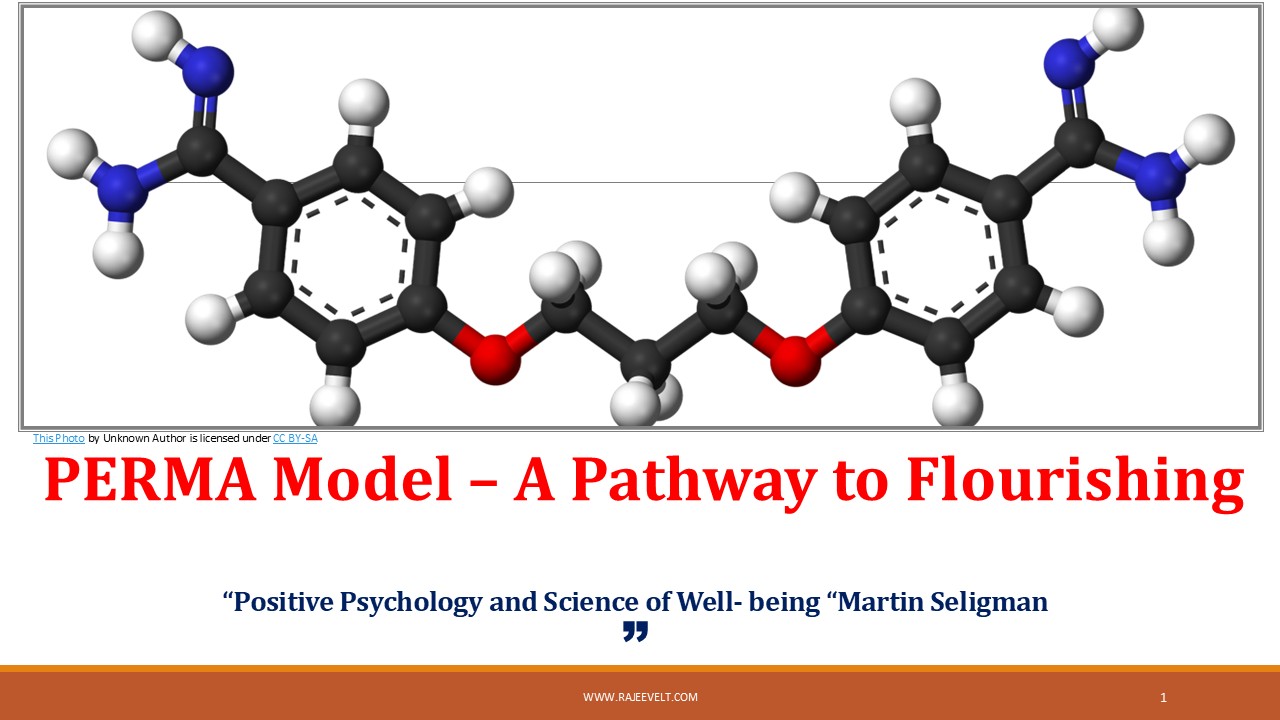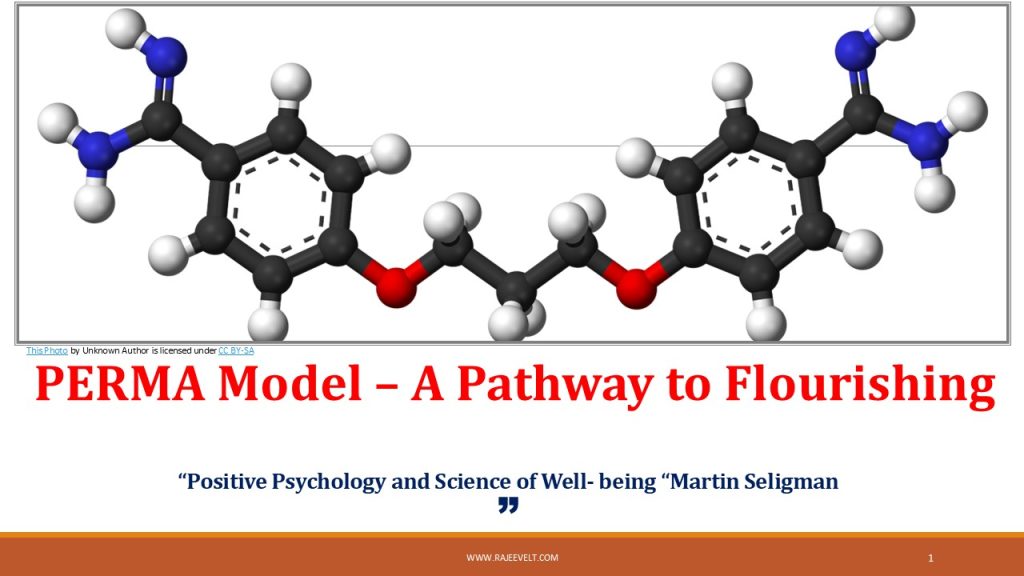The PERMA Model – A Pathway to Flourishing
Positive Psychology and the Science of Well-Being
The field of psychology underwent a remarkable transformation in the early years of the twenty-first century. Where once the dominant focus had been on the diagnosis and treatment of mental illness, a new lens began to emerge—one that asked not only how human beings survive adversity, but also how they succeed. This fresh perspective came to be known as Positive Psychology, championed by Martin Seligman and his colleagues. It was not a denial of suffering or the hardships of life, but rather an insistence that human flourishing deserved equal attention. Out of this evolving movement came one of the most influential frameworks of well-being science: the PERMA Model (Seligman, 2011).
Human beings do not live for survival alone. We seek joy, meaning, connection, achievement, and a sense that our lives matter. We hunger for something beyond the absence of pain; we long for a life well-lived. The PERMA model was Seligman’s attempt to capture these dimensions of flourishing in a structured yet deeply human framework. We will walk together through the five pillars of the model—Positive Emotions, Engagement, Relationships, Meaning, and Accomplishment—exploring their significance, the research that supports them, and the ways in which they can shape our

The Origins of PERMA
We should first recognize its roots of PERMA. Martin Seligman, widely known for his earlier research on learned helplessness and later as the father of Positive Psychology, became convinced that psychology had been incomplete. The field primarily concerned itself with pathology—curing mental illness, repairing damage, alleviating suffering. While this was vital, it left a void: what about the promotion of well-being? What about the cultivation of human potential?
Seligman proposed that well-being could be studied, measured, and deliberately enhanced. He defined flourishing as a life rich in meaning, accomplishment, joy, and connection. The PERMA model was presented in his book Flourish (2011) as a comprehensive approach to understanding and cultivating well-being. Each component of PERMA contributes to flourishing in its own way, and together they form a blueprint for a fulfilling life.
P – Positive Emotions
The first pillar of the PERMA model is Positive Emotions. These include joy, gratitude, serenity, interest, hope, pride, amusement, inspiration, awe, and love. They are not trivial luxuries; rather, they serve as essential building blocks of psychological resilience and growth.
Barbara Fredrickson’s “broaden-and-build” theory provides strong empirical grounding here. Positive emotions broaden our thought–action repertoires, making us more creative, open-minded, and flexible. They also build enduring psychological resources, such as resilience, optimism, and social bonds. When we experience joy, we are more likely to play, explore, and connect with others—behaviours that strengthen relationships and skills.
Cultivating positive emotions in daily life requires intentional practice. Gratitude exercises, savouring moments of beauty, mindfulness of small joys, and acts of kindness all help us increase the frequency of positive emotions. Seligman clarified that positive emotions are not about denying negative feelings. Life includes pain, stress, and loss; but the presence of positive emotions helps balance and buffer these experiences, creating a more resilient psychological system.
We flourish when we make space for joy. The laughter shared at dinner, the awe we feel under a starry sky, the gratitude for a friend’s support—all these moments accumulate, shaping our overall well-being.
E – Engagement
The second pillar is Engagement, often described as the state of “flow.” Psychologist Mihaly Csikszentmihalyi introduced the concept of flow as a deep absorption in activities that challenge and fulfill us. When we are in flow, time seems to vanish, self-consciousness fades, and we become fully immersed in what we are doing.
Engagement is not about passive pleasure; it is about active involvement. Think of the musician lost in a performance, the athlete absorbed in a game, or the student engrossed in solving a complex problem. These are moments of engagement where our skills meet the challenge at just the right level.
Engagement is essential for well-being because it connects us with our strengths and capacities. When we use our character strengths—such as creativity, perseverance, kindness, or curiosity—in activities that matter to us, we experience a sense of authenticity and fulfillment. The VIA Classification of Character Strengths, developed by Peterson and Seligman (2004), offers a practical tool to identify and cultivate these strengths.
When we want to develop engagement, we should design our lives to include activities that stretch us. This may mean pursuing hobbies that challenge us, seeking opportunities at work that integrate with our skills, or learning new skills that bring satisfaction. Engagement requires effort and attention, but it rewards us with vitality and growth.
R – Relationships
No model of well-being would be complete without acknowledging the profound role of Relationships. Our bonds with others shape much of our happiness and resilience as we are social creatures. Research consistently shows that the quality of our relationships is one of the strongest predictors of life satisfaction.
Relationships provide us with love, support, and a sense of belonging. They act as buffers against stress and sources of joy in times of triumph. In fact, studies reveal that social isolation is linked with higher mortality rates, while strong social connections enhance both physical and psychological health.
But relationships are not only about receiving; they are also about giving. Acts of compassion, empathy, and kindness deepen our bonds with others. We find meaning, shared laughter, and a sense of interdependence in nurturing relationships, that transcends individualism.
Cultivating relationships requires intentionality. It means prioritizing time with loved ones, practicing active listening, expressing appreciation, and being present. In the rush of modern life, we often risk treating relationships as secondary to work or personal achievement. The PERMA model reminds us that flourishing is incomplete without genuine, nurturing human connection.


M – Meaning
The fourth pillar is Meaning, perhaps the most profound dimension of well-being. Meaning arises when we feel connected to something larger than ourselves—whether it is family, community, faith, nature, or a cause greater than individual concerns.
Viktor Frankl, the Holocaust survivor and psychiatrist, famously wrote in Man’s Search for Meaning that humans can endure almost any suffering if they can find meaning in it. Meaning gives us direction and resilience, helping us navigate challenges with a sense of purpose.
Research demonstrates that people who report high levels of meaning in life experience greater life satisfaction, stronger resilience, and even better health outcomes. Meaning is not merely about happiness in the moment; it is about coherence, significance, and a sense that our lives matter.
Finding meaning is a deeply personal journey. It may come from spirituality for someone or religion; for others, from serving a community, advancing knowledge, or raising children. What unites these diverse sources is the feeling that we are contributing to something beyond the self.
We can ask ourselves to cultivate meaning: What do I stand for? How do I want to be remembered? What brings me a sense of contribution? The answers guide us toward a more purpose-driven life, where even difficulties can be integrated into a larger narrative of growth and service.
A – Accomplishment
The final pillar is Accomplishment (sometimes referred to as Achievement). Accomplishment is the pursuit and attainment of goals, mastery, and success. It represents our drive to improve, to persevere, and to feel the pride of progress.
Achievement is not simply about external recognition or comparison with others; it is also about the intrinsic satisfaction of growth. Setting goals, working toward them, and celebrating small wins develop a sense of competence and agency. This enhances self-esteem and motivation in turn.
However, accomplishment should be balanced. An overemphasis on achievement can lead to burnout, perfectionism, or neglect of other dimensions of well-being. The PERMA model situates accomplishment as one pillar among five, reminding us that flourishing requires balance, not obsession with success.
Practical strategies for cultivating accomplishment include setting SMART goals (specific, measurable, achievable, relevant, time-bound), reflecting on progress, and celebrating milestones. Importantly, accomplishments are not restricted to career or academic success. They include personal growth, skills learned, habits developed, and challenges overcome.

PERMA in Everyday Life
The beauty of the PERMA model lies in its practicality. Each pillar can be nurtured through intentional actions:
- Positive Emotions: Practice gratitude journaling, savour daily joys, engage in acts of kindness.
- Engagement: Identify strengths and integrate them with daily activities; seek flow-inducing challenges.
- Relationships: Prioritize meaningful connections, practice empathy, and express appreciation.
- Meaning: Reflect on values and purpose, engage in service, connect with causes bigger than oneself.
- Accomplishment: Set and pursue realistic goals, celebrate progress, and recognize growth.
The model is not prescriptive but flexible. We can enter through any pillar, and the benefits often spill over into others. For instance, strengthening relationships often enhances positive emotions; pursuing meaning may foster accomplishments.
Critiques and Limitations
No model is beyond critique. Some scholars argue that PERMA, while comprehensive, may overlook dimensions such as physical health or environmental well-being. Others caution that cultural variations in the understanding of well-being might require broader frameworks. Relationships and community may play an even stronger role than individual accomplishment in collectivist cultures.
Nevertheless, the PERMA model remains one of the most widely used frameworks in both research and practice. Its strength lies in its balance: it captures joy and purpose, self and others, being and doing.
Flourishing as a Lifelong Journey
The PERMA model reminds us that well-being is not a single destination but a lifelong journey. It calls us to live with joy, to engage deeply, to cherish relationships, to seek meaning, and to celebrate our accomplishments. Each pillar is a pathway to flourishing, and together they form a holistic vision of the good life.
When we reflect on our own lives, we should ask: How much joy am I allowing myself? Where do I feel most engaged? Whom do I cherish and nurture? What gives my life meaning? What goals am I working toward? These questions guide us to not only survive but to thrive, to not only exist but to flourish.
Seligman’s vision was bold: a psychology not merely of illness, but of well-being. The PERMA model embodies that vision—a humanistic, hopeful framework for understanding and cultivating the richness of life. It reminds us that flourishing is possible, not in spite of life’s difficulties but often because of the meaning, resilience, and growth they inspire.
References
- Csikszentmihalyi, M. (1990). Flow: The Psychology of Optimal Experience. New York: Harper & Row.
- Fredrickson, B. L. (2001). The role of positive emotions in positive psychology: The broaden-and-build theory of positive emotions. American Psychologist, 56(3), 218–226.
- Peterson, C., & Seligman, M. E. P. (2004). Character Strengths and Virtues: A Handbook and Classification. New York: Oxford University Press.
- Seligman, M. E. P. (2011). Flourish: A Visionary New Understanding of Happiness and Well-being. New York: Free Press.
- Frankl, V. E. (1946/2006). Man’s Search for Meaning. Boston: Beacon Press.


